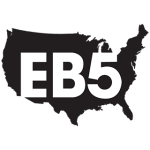
For over 30 years, the EB-5 investment program has offered foreign nationals a convenient and secure way to relocate to the United States. Many consider the EB-5 program to be the best visa-by-investment system in the world. Additionally, its beneficial effect on the U.S. economy has secured its continued popularity.
Still, the EB-5 investment industry can be difficult to navigate. Even though the EB-5 program’s basic criteria for investors are straightforward, proving compliance with all of them can be challenging even with the help of an experienced immigration attorney. EB-5 investors must provide evidence that they have created at least 10 jobs, used at-risk capital, and sourced their funds legally.
United States Citizenship and Immigration Services (USCIS), which governs the EB-5 program, requires investors to submit two important forms during the EB-5 process: Form I-526, Immigrant Petition by Alien Investor, and Form I-829, Petition by Investor to Remove Conditions on Permanent Resident Status. In these forms, EB-5 investors must show compliance with the above-mentioned requirements. Unfortunately, USCIS denies many EB-5 visa petitions, usually due to common recurring mistakes made by investors. In this article, we show EB-5 investors how to avoid USCIS denials.
Provide Consistent and Accurate Information
It can be challenging to keep track of the minute details and figures that must be included in Forms I-526 and I-829. For example, I-526 petitions must contain details about the EB-5 investment project’s business plan and approach toward creating jobs. If financial projections, employment estimates, or other information is presented inconsistently, USCIS will likely send a request for evidence (RFE) or deny the I-526 petition outright.
The immigration attorney in charge of compiling and filing an investor’s EB-5 visa petition should take great care to ensure internal consistency. Investors should check their petitions several times before filing them.
Evaluate EB-5 Projects Carefully
USCIS also sets out several requirements for EB-5 businesses. Unfortunately, not all available EB-5 projects comply with USCIS regulations, so potential investors should examine every EB-5 investment opportunity carefully. For example, EB-5 investment capital must be at risk and irrevocably committed to the project; all EB-5 investors must be subject to financial gains or losses. In its Policy Manual, USCIS states, “If the immigrant investor is guaranteed a return, or a rate of return on all or a portion of his or her capital, then the amount of any guaranteed return is not at risk.” Therefore, EB-5 businesses that offer a guaranteed return to their investors should be avoided. The at-risk requirement for EB-5 funds applies to both Form I-526 and Form I-829.
Provide Abundant Source-of-Funds Evidence in Form I-526
One of the most time-consuming aspects of compiling Form I-526 is the source-of-funds documentation. EB-5 investors must prove that their funds are lawful and submit numerous documents tracing the capital to its source. USCIS has high evidentiary standards, so the submitted documentation must be thorough and convincing. For example, EB-5 investors who use capital from a real estate sale do not only have to prove that they sold the property—they must also show how they came to acquire it in the first place.
In addition, the needed evidence will depend on each investor’s source of capital, so there is no universal list of required documents for Form I-526. An immigration attorney’s assistance will be invaluable at this stage.
EB5 investment regulations may seem overwhelming, but the program is still a comparatively easy way to relocate to the United States. Before making an EB-5 investment, interested foreign nationals should carefully evaluate USCIS requirements and consult with immigration counsel.
